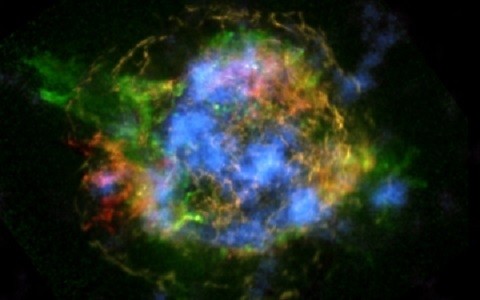
NASA's Nuclear Spectroscopic Telescope Array (NuSTAR) has solved the mystery of supernova explosions that has baffled scientists for a long time.
The high-energy X-ray observatory has produced the first map of radioactive material in a supernova remnant, which is 11,000 light years away. Observing a remnant named Cassiopeia A (Cas A), astronomers could view the star closer than ever and the elements scattered into the universe during the explosion such as calcium, titanium and iron.
Scientists were astonished that stars that are spherical in shape, doesn't explode in a globular manner. Instead, the blast is more distorted and lumpy from the beginning, explained Fiona Harrison, scientist at the California Institute of Technology and principal investigator on NuSTAR.
"Prior to the explosion, the core of the star literally sloshed about," NDTV quoted Harrison.
The star blasted about 350 years ago, exploding the outer coatings with extreme heat that produced more elements.
Since 1670, Cas A has been expanding and driving debris at a speed of ten million miles an hour. But it's only now that scientists have been able to take a glimpse of the radioactivity that was created inside the explosion.
"With NuSTAR, we have a new forensic tool to investigate the ashes left behind when this star exploded," Brian Grefenstette, an astronomer at Caltech, added.
NuSTAR was launched in 2012 on a two-year mission and is the first orbiting telescope to concentrate on high-energy X-rays of the electromagnetic spectrum.
Although Chandra Observatory is the most powerful X-ray telescope, NuSTAR is capable of monitoring a wider range that older orbiting telescopes can't cover.
The Earth itself is something that is the residue of this astronomical process. So we are all star dust and NuSTAR is showing us where we came from, including our replacement parts", explained Robert Kirshner, an astronomer at the Harvard-Smithsonian Center for Astrophysics.
Star explosion is important as the elements exploded during the blast such as iron, is used in making cars, calcium is needed for bones and titanium is used to manufacture hip replacements.








